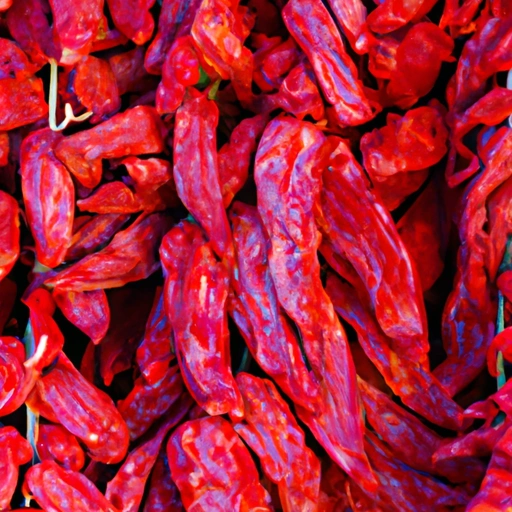Hungarian Paprika
Description

Hungarian paprika is a vibrant, richly colored spice made from the ground sweet red peppers of the Capsicum annuum species. Originating from Hungary, this spice is celebrated for its ability to impart a warm, sweet, and sometimes smoky flavor to a wide array of dishes. Recognized by its bold red hue, it ranges in flavor from mild to hot, and is a staple in Hungarian cuisine as well as a beloved ingredient in kitchens worldwide. Hungarian paprika is often sold in various grades that reflect its pungency and heat level, from delicate to robust.
Common uses
The robust flavor of Hungarian paprika makes it ideal for seasoning meats, stews, soups, and sauces. It also serves as a colorful garnish, adding visual appeal and a hint of sweetness to dishes.
Nutritional value
Calories
One tablespoon (6.8 grams or 0.24 ounces) of Hungarian paprika contains approximately 19 calories.
Protein
This serving size of Hungarian paprika provides about 1 gram of protein.
Fat
Hungarian paprika contains a negligible amount of fat, less than 1 gram per serving.
Carbohydrates
There are about 4 grams of carbohydrates in a tablespoon of Hungarian paprika.
Vitamins
Hungarian paprika is an excellent source of vitamin A, with levels around 3,500 IU (International Units) per tablespoon. It also contains a good amount of vitamin C and some B vitamins.
Minerals
The spice is rich in iron, providing about 2 milligrams per tablespoon, and also contains magnesium, potassium, and calcium in smaller amounts.
Health benefits
Hungarian paprika is not only loved for its flavor but also for its health benefits. It is high in antioxidants, supports immune function due to its vitamin C content, and can aid in improving eye health because of its rich vitamin A content. The capsaicin in certain hot varieties may also have metabolism-boosting properties.
Potential risks
While Hungarian paprika is generally safe for consumption, excessive intake of the spicier varieties could lead to stomach irritation for those with sensitive digestive systems. Additionally, the high vitamin A content means that one should be mindful not to consume it in excessive amounts to avoid toxicity.
Common recipes
Hungarian paprika is a key ingredient in classic Hungarian recipes such as goulash, chicken paprikash, and paprika potatoes. It's also used in rubs for meats and added to marinades and dressings.
Cooking methods
When cooking with Hungarian paprika, it's important to add it to dishes with care to avoid burning the spice. Gently toasting it can release its flavors, but it should be done over low heat and not for too long.
Pairing with other ingredients
This versatile spice pairs beautifully with onions, garlic, tomatoes, sour cream, chicken, beef, and legumes, among other ingredients.
Summary
Hungarian paprika is a multifaceted spice that offers a combination of sweet, smoky, and spicy flavors. It is an essential ingredient in Hungarian cuisine, but its use has spread across the globe, enhancing the taste and appearance of various dishes. With its health benefits and wide range of culinary applications, Hungarian paprika is a must-have for food lovers and cooks everywhere.